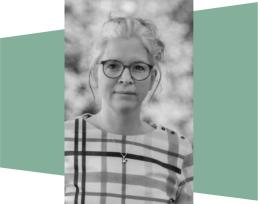Birgit Schneider
Birgit Schneider ist Professorin für Wissenskulturen und mediale Umgebungen an der Universität Potsdam. Zuvor hatte sie eine Vertretungsprofessur für Geschichte und Theorie der Kulturtechniken an der Bauhaus-Universität in Weimar und war Visiting Fellow am Rachel Carson Center for Environment and Society in München. Zudem war sie Senior Fellow am Internationalen Kolleg für Kulturtechnikforschung in Weimar. Schneider ist Ko-Sprecherin des Netzwerks "Digitale Geisteswissenschaften" der Universität Potsdam. Ihre Forschungsschwerpunkte sind neben Kritischer Kartierung und Datenvisualisierung, der Visualisierung des Klimawandels zwischen Wissenschaft, Ästhetik und Politik, Kultureller Geografie und den Environmental Humanties auch Media Aesthetics.
Zu Schneiders repräsentativen Publikationen zählen unter anderem Google-Gaia. Feedback Loops for Action with Global Forest Watch (together with Lynda Olman). In: Gabriele Dürbeck / Philip Hüpkes (ed.): Narratives of Scale in the Anthropocene. Imagining Human Responsibility in an Age of Scalar Complexity (2021); Klimabilder. Eine Genealogie globaler Bildpolitiken von Klima und Klimawandel (2018) sowie The Technical Image. A History of Styles in Scientific Imagery, englische Fassung des Buchs Das Technische Bild (hrsg. mit Horst Bredekamp und Vera Dünkel, 2015).
Three Quick Questions:
In a few words, can you tell us about your current research interest?
I’m working on questions related to environmental media as part of different critical case studies: one of them is how trees and forests are transformed into operational images via satellites. Many of my subjects are related to the current ecological crisis and how media are introduced to render this crisis imaginable, but at the same time "operationable".
How do you relate the term poiesis to your work?
Images change the way we see the world. Data images such as google engine driven data worlds produced by AI and satellite imagery build a machinima and by this create new spaces to work on the planetary reality.
Which film or other audiovisual format has resonated with you lately and why?
Safe by Todd Haynes with Juliane Moore. This psychological drama from the year 1995 tells the story of a Californian woman who tries to escape a new environmental hyper sensitivity by escaping to an unpolluted retreat and increasingly withdrawing into her own shell. When I saw the movie this year, it reminded me of the new danger connected to breathing in pandemic times but also of the topic of radiation hypersensitivity in a world of media ubiquity.
